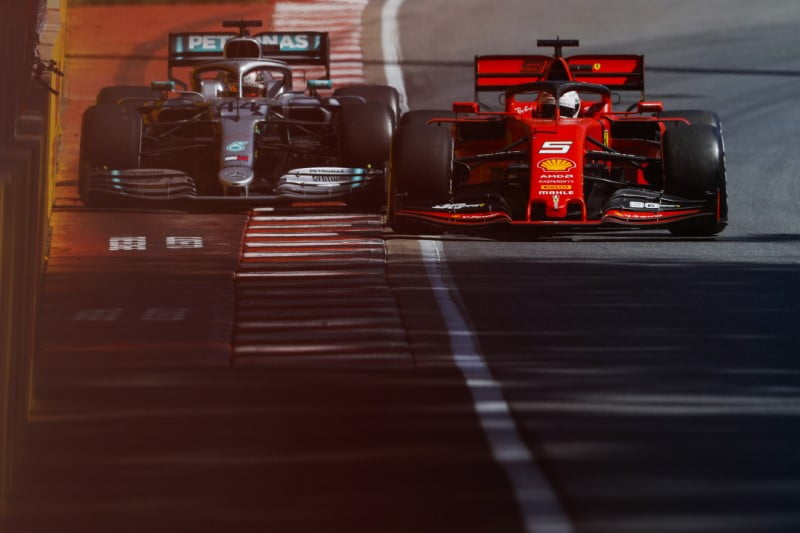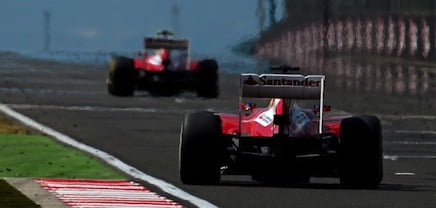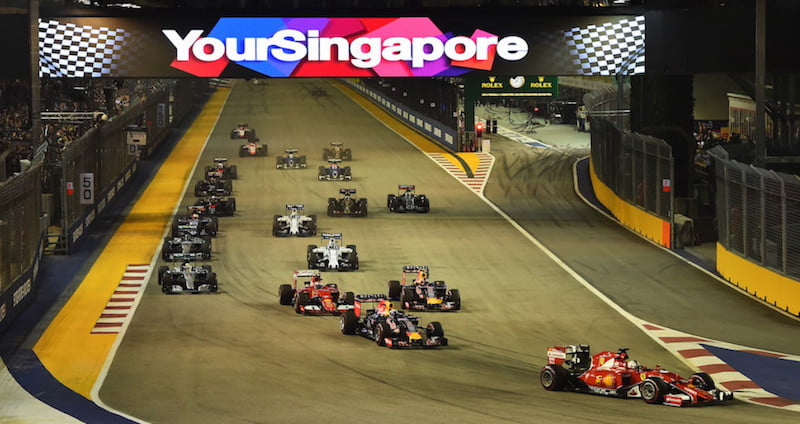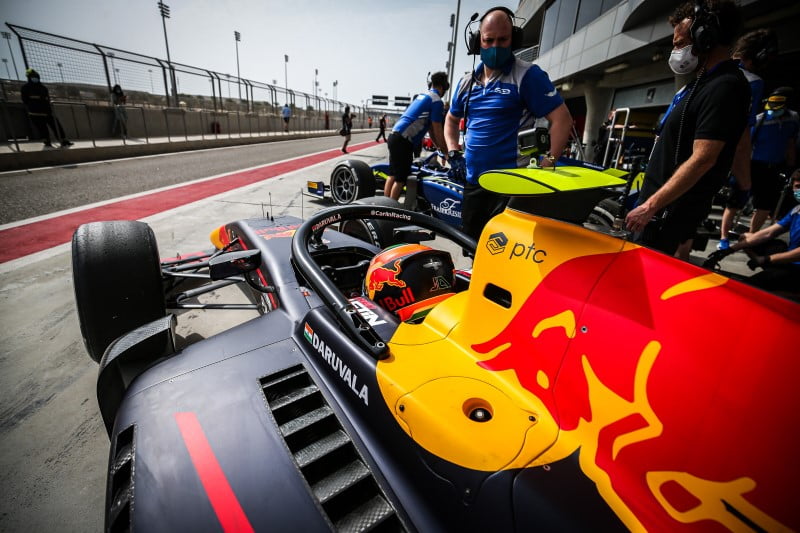F1’s official website often dissects two-sides of a controversy. For the Canada penalty for Vettel though, they only toed the line drawn by the FIA – understandably so.
The Canadian Grand Prix is a bit of a maverick in the world of Formula 1. For starters, the race is scheduled in the middle of the European leg of the Formula 1 calendar. After Monaco, teams flew across the Atlantic to race in Canada and will now return to go race in France. Furthermore, several current drivers have scored their ‘first’ Formula 1 wins in Canada — Lewis Hamilton, Robert Kubica and Daniel Ricciardo. More often than not, the characteristics of Circuit Gilles Villeneuve guarantees fans an exciting motor-race — memories from 2008, 2010 and 2011 fill one’s mind instantly. In fact, it is sort of befitting that the Grand Prix venue is named after the maverick and legendary Formula 1 racers of the yesteryears.
The 2019 Canadian Grand Prix was no different. Sebastian Vettel shocked everyone (and himself too?) by clinching pole position ahead of Lewis Hamilton. Vettel’s fastest lap was two tenths faster than his Mercedes rival — a sizeable difference given the shorter circuit length. Ferrari’s power advantage in the final sector was one of the biggest factors in helping Vettel beat Hamilton’s provisional pole position lap time. For Formula 1, Sunday was expected to be a blockbuster with the sport’s greatest rivals lining up alongside each other at the start with a clear aim to beat the other — something that the French Open failed to deliver! The Ferrari vs Mercedes battle seemed more evenly matched after Mercedes’ dominant wins for the last several races and the obvious question was whether Ferrari-Vettel had the pace to keep Mercedes-Hamilton at bay over the 70-lap race.
Sebastian Vettel’s best move all season? #F1 #CanadianGP pic.twitter.com/FDD6E5biCv
— Kunal Shah (@kunalashah) June 9, 2019
Vettel In Control
After a start with not too many shenanigans, the race proceeded with the usual narratives — drivers attempting different tyre strategies and DRS-enabled overtakes. The Vettel-Hamilton battle, one that everyone was waiting for, started to build-up after lap 40. Vettel, who was controlling the pace of the race, was coming under increasing pressure from Hamilton. The gap between the two drivers kept reducing with Hamilton managing to get within 1-second (or the DRS range) with much ease.
However, Vettel used Ferrari’s power boost at key parts of the track to maintain the lead of the race. It seemed like the two would duel in this manner till the end of the race, however, on lap 48, Hamilton had a breakthrough. Vettel, whose last pole position was 17 races ago (2018 German Grand Prix), made a mistake at Turn 3. He lost his Ferrari at the entry of the corner, drove on the grass and rejoined the track on the racing line. Hamiton instantly radioed his team to let them know that Vettel’s re-entry was dangerous. A few laps later, the FIA awarded Vettel a five-second time penalty — also handing the sport one of its biggest headlines (or controversies) of the 2019 Formula 1 season yet. Before delving deeper, we would like to highlight that the Formula 1 broadcast feed was showing the race from Hamilton’s on-board camera moments before Vettel made his mistake. Thus offering fans a different and an almost-driver’s view of the incident!
Hamilton To Win The F1 2019 Constructors’ Championship?
The penalty meant that all Hamilton had to do was finish the race within 5 seconds of Vettel — an easy ask given the pace of his Mercedes. Expectedly, Hamilton clinched his 78th career win in Formula 1 and fifth out of the seven races contested this season — despite not leading a lap of the race apart from when Vettel pitted. The reigning World Champion’s race weekend in Canada wasn’t without much drama either. After qualifying and several hours before the race, Mercedes detected a hydraulic leak on Hamilton’s car — one that was fixed within the regulations to ensure no penalty. In fact, moments before the start, Mercedes’ mechanics were seen frantically working on the front-end of Hamilton’s car to ensure its race worthiness. As for Mercedes, a power unit blow-out on Lance Stroll’s car (in Free Practice 3) would have the team tensed given that they had brought upgrades for this weekend.
Ferrari’s Charles Leclerc finished 3rd — his second podium finish of the season, while Mercedes’ Valtteri Bottas could only finish 4th, the Finn’s first non-podium finish of the season. For Leclerc, were Ferrari cheeky in not informing their young driver of Vettel’s time penalty? On the final lap of the race, Leclerc almost took away second place from Vettel. Possibly Ferrari didn’t want to ruffle the situation further since their best result would have anyway been a 2-3 finish. As for Bottas, he spent a large part of the race battling the faster-than-expected Renault cars rather than the podium trio. Let’s hope this race wasn’t marking a return of Bottas 1.0!
Red Bull Racing employed an alternate tyre strategy (hard-medium) for Max Verstappen — who started out of the top-10 after Kevin Magnussen’s Wall of Champions moment in qualifying brought an unexpected end to Q2. The Dutchman finished 5th, while his team-mate, Pierre Gasly, could only manage 8th, despite starting in the top-10 and ahead of Verstappen. Taking heart in beating at least one Red Bull Racing car were the two Renault drivers — Daniel Ricciardo (6th) and Nico Hulkenberg (7th). In Canada, Ricciardo proved his worth to Renault by registering their best qualifying result (4th) since 2010 and then benefitted from team-orders to finish ahead of Hulkenberg. Like Ferrari, Renault knew that 6-7 would be their result irrespective of their use of team-orders. Local racer, Lance Stroll, finished 9th and ahead of Toro Rosso’s Daniil Kvyat.
Sebastian Vettel showing shades of Michael Schumacher today…of course, in his post-race demeanour, I mean. He’s gone and replaced the #1 in front of HAM’s car with the #2 signage. Hilarious. #F1 #CanadianGP
— Kunal Shah (@kunalashah) June 9, 2019
Stroll, who faced his 11th consecutive exit in Q1 on Saturday, did well to recover and finish in the points despite having to switch back to the older-spec Mercedes power unit. The Canadian has finished in 9th place three times this season. As for Kvyat, this was his 3rd successive points-scoring finish. For Mclaren, the 2019 Canadian Grand Prix was a disappointment, despite having both their cars qualify in the top-10. Lando Norris’ car suffered from a strange failure on the right rear tyre. The team are yet to reveal the reason behind this failure, but paddock talks indicate that the high brake temperatures probably melted some parts of the car’s suspension. Carlos Sainz Jr. was awarded a 3-place grid drop after impeding Alexander Albon in qualifying. In the race, Sainz had to pit early to remove a visor strip that was stuck on his car, thereby compromising his race. However, it was heartening to see a Norris vs. Verstappen battle — one that saw the Renault-powered Mclaren car ably competing against the Honda-power at the back of the Red Bull.
10 Tips To Deal With Mercedes’ Dominance In F1 2019
After showing early season form, Alfa Romeo scored its third consecutive no-points finish. The team, who were initially competing for 4th place in the Constructors’ Championship, are now relegated to 9th, just ahead of Williams. Likewise for Kimi Raikkonen, who was fighting for 7th place in the Drivers’ Championship. The Iceman is now 11th but only 5 points down on the current ‘best of the rest’ leader, Carlos Sainz Jr. As for Haas, Formula 1 fans were treated to a live broadcast act of bluntness from Guenther Steiner, one of the stars of the Netflix’s F1 show ‘Drive to Survive’. Steiner told off Magnussen on the pit-to-car radio when the Danish driver incessantly complained about his car. Haas’ mechanics had worked through the night to fix Magnussen’s car after his qualifying crash on Saturday.
Vettel Out Of Control
Finally, was Vettel’s penalty fair and justified? Twitterverse was quick to share recent incidents of a similar nature that were addressed differently — notably Verstappen-Raikkonen in the 2018 Japanese Grand Prix — where a similar penalty was awarded to Verstappen, and Ricciardo-Hamilton back at the 2016 Monaco Grand Prix — where Hamilton escaped punishment. Firstly, let’s acknowledge that the FIA have the toughest job at a Grand Prix weekend — adjudicating 50:50 racing incidents that can have an impact on the race result (like this) or a worse, a championship is always tough. Irrespective of which side of the fence you sit on (penalty or not, for Vettel), at the 2019 Canadian Grand Prix, the FIA robbed Formula 1 of an epic battle between Hamilton and Vettel for the lead of the race — one that fans have been longing to have since the start of the season.
However, the chatter around the penalty being right or wrong has taken focus away from one key point — Vettel’s repeated mistakes while leading the race under pressure. Was Vettel’s post-race demeanour a result of the disappointment and anger at his own mistake? The German driver skipped the official post-race interviews and instead chose to go off to the meet the FIA before returning to Ferrari’s hospitality centre. Thankfully, common sense prevailed and Vettel returned for the podium ceremony. But one could expect more sanctions or penalties from the FIA for skipping the official post-race procedure.
As for the penalty itself, the FIA ruling was harsh, despite their best efforts to explain how they reached their judgment. Vettel’s reactions were a mix of momentum, instinct and intention. As pointed out by most former Formula 1 racers, there was no way Vettel could’ve re-joined the track in any other manner than he did — it was momentum that led him there. You could blame the laws of physics as well as the street-circuit nature of Circuit Gilles Villeneuve. Every racing car driver worth his (or her) salt would’ve instinctively done what Vettel did — bring the car back, avoid the walls and get back to full speed on dirty tyres without losing as much time as possible — Hamilton made this claim post-race. Also, it was instinct that prompted Hamilton to report Vettel’s move on the radio knowing fully well that the FIA would be listening in too: even though the Mercedes driver admitted post-race that his intentions weren’t to win in the manner in which the victory was handed to him.
Race. Defining. Moment. ?️#CanadianGP ?? #F1 pic.twitter.com/053sau3we1
— Formula 1 (@F1) June 9, 2019
Finally, intention. Like Vettel, every driver would have intended to keep as many cars behind as possible. Let’s remember, this was for the lead of the race — one that would’ve gone down in history as Ferrari’s first win of the 2019 Formula 1 Season. And of course, there was a bit of desperation involved too — to not cede position to Hamilton, who would’ve possibly disappeared into the distance. This is probably where Vettel knew that swiping across the circuit was the best way to have Hamilton brake too — offence being the best form of defence?
Would Vettel have been penalised had he left half a car width more for Hamilton? Should Vettel have slowed down upon re-entry, an act that could’ve led to Hamilton crashing into him? Or should Vettel have let Hamilton through and then attacked him with Ferrari’s power advantage for the remaining 20-odd laps? There’s always a could’ve-should’ve-would’ve scenario, but the reality is that despite Ferrari’s intention to appeal the penalty, we don’t see the FIA’s decision being over-ruled. Ferrari, who are rightful to feel robbed of a race win, will have ample car-driver data to present as evidence to the court (even though the 5-second time penalties can’t actually be appealed!). Let’s hope that this appeal doesn’t cost Ferrari more brain-power, one that they need to entirely focus on resurrecting their current campaign. As days pass, Ferrari will and should question Vettel’s repeated mistakes under pressure.
Lewis Hamilton: F1’s Best Showman?
Up next is the French Grand Prix — will Mercedes score their 8th consecutive win of the season or have Ferrari found what it takes to beat the Silver Arrows? If so, will Vettel finally stop making mistakes and make the most of the opportunities thrown at him? He needs to deliver to the championship levels that have been re-defined by Hamilton. Mercedes seem to be in an era that reminisces the sport of the dominant Ferrari-Schumacher times from the 2000s — on track and off it. Renault’s surge in performance should excite the French fans, but between now and then, expect the Vettel penalty to be discussed and over-discussed on all platforms.
This post was first published on Firstpost














